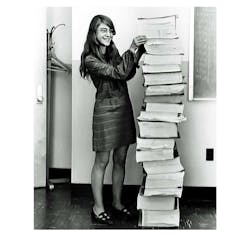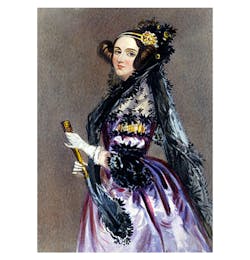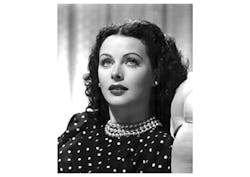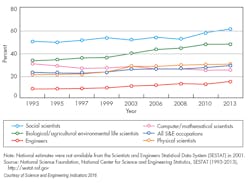Download this article in PDF format.
Female engineers will never have equal footing with their male counterparts. This is not to imply anything in terms of performance, money, or status, but rather to bring to light the fact that women come across different, and often times, more challenging obstacles along their career path than men.
For example, it takes an additional mental aptitude to remain in a place where you do not feel welcome. Have you ever felt unwelcome at a party? You have the choice to leave and go home with little to no consequences. Now imagine that party was your passion for STEM, your career. Women in STEM are still being met with resistance. Ultimately, they will never be equal, regardless if they achieve the same pay and positions as their male counterparts, because they have had to work harder to reach those goals. Additionally, Women of Color (WOC) face their own unique challenges in STEM fields as they must navigate racism as well as sexism.
This stack of papers is actually a program for the Apollo 11 mission that helped put a man on the moon. Standing beside the program was Margaret Hamilton, the woman who wrote it (Courtesy of Wikipedia).
This article aims to illustrate the diversity throughout the long history of science and engineering, but also point out that women still face many challenges today. In order to advance science, we must recognize and overcome these biases. Let’s start with some history.
Ada Lovelace
Ada Lovelace (Courtesy of Wikipedia)
At the age of 17 (year 1832), Ada Lovelace met Charles Babbage. He showed her his plans for creating an Analytical Engine. Lovelace got started adding pages of notes and ideas to his paper. Subsequently, she wrote an algorithm that could be used with the machine to generate numbers in the Bernoulli series. Babbage published these notes along with his paper describing his Analytical Engine, but it wasn’t until more than a century after her death that Lovelace’s notes were recognized as the world’s first computer program.
Pickering’s Harem
Pickering’s computers at Harvard University. (Courtesy of Harvard College Observatory)
Edward Charles Pickering was an astrophysicist and director of the Harvard College Observatory. He hired women—titled “computers”—to gather and analyze stars data for his research.
This group of women was selected for multiple reasons, the first being that they worked for about half the pay of men. Documenting stars is very tedious work, as there are many stars, so getting more people for the same cost was advantageous. Secondly, the professor in charge would be less threatened by a woman. Young males might get ideas to compete, or argue to have their names put on documents.
Women at this time [late 1800 to early 1900] were barely allowed to study science, let alone take credit for groundbreaking discoveries. In fact, most of these women’s discoveries, or “work at large,” were named after Pickering or Harvard. And despite the amazing discoveries that would eventually be accredited to these women, the group was distastefully referred to as Pickering’s Harem.
Henrietta Swan Leavitt found the relationship between luminosity and the Cepheid variable that led to the modern understanding of the size of the universe, and how we measure distances in space. Antonia Maury modified the way we classify stars, and Annie Jump Cannon changed it again in 1912. We continue to use this method to classify stars today. This work was in addition to cataloging over a quarter of a million stars in Cannon’s life. On top of having the disadvantage of being women in science, both Cannon and Leavitt were deaf, exemplifying that disabled people have made contributions to science as well.
In 1923, Cecilia Payne-Gaposchkin was forbidden, as a woman, to study science in Britain. She had to leave the country and relocate to become a Harvard computer in order to be allowed to study science. It was even said that Cecilia was surprised by the kindness she found in the company of the other women.
This sisterhood led to the dawn of modern astrophysics. All it took was for Cecilia to figure out what stars are made out of, make a paradigm shifting discovery, write her thesis, have it rejected, have her fold to convention, and then wait four years until they figured out she was right the entire time. Cecilia’s stellar atmospheres thesis became the standard text in the field and is still held as one of the most highly regarded papers ever written in astrophysics.
Today, having the knowledge of what stars are made of, the methods we measure distances in space, and how we categorize stars can all be credited to the women from Pickering’s group.
Hollywood and Science
Hedy Lamarr (Courtesy of Wikipedia)
Hedy Lamarr might be best known for her acting career, but what many don’t know is that she was also a brilliant inventor. Working with composer George Anthell, they used a frequency hopping spread spectrum to prevent radio guidance systems from being jammed in WWII. This same technology is used today for Wi-Fi, Bluetooth, and similar technologies. Lamarr lived from 1914 till 2000, and unfortunately wasn’t inducted into the National Inventors Hall of Fame until 14 years after her death.
WOC in STEM
Katherine Johnson at NASA in 1966. (Courtesy of Wikipedia)
Katherine Johnson joined the Guidance and Navigation department for the National Advisory Committee for Aeronautics (NACA, which later became NASA) in 1953 as one of a number of African-American women “computers.” While there, she continuously performed calculations on incoming data from the black boxes of airplanes. She eventually moved on to become an aerospace technologist and an integral part of the Spacecraft Controls Branch, where she calculated the trajectories of spacecraft and return-flights paths. She was awarded the Presidential Medal of Freedom, America’s highest civilian honor, in 2015 for her many contributions to STEM. Hidden Figures, a film about her (and other’s) accomplishments, made headlines in 2016.
Being a Black Female Engineer: Setbacks and Perks by Rhoshell Nichole Baker
Rhoshell Nichole Baker
“As a black female engineer, I was treated with either respect or repulsion. A past supervisor intentionally told me to my face that “if he had the choice to hire, it would not be a colored girl.” On the opposite side to the coin; I had supervisors who have worked closely with me in a team environment and appreciated my input.
Being an engineer is very challenging for some women, because the term “engineer" in itself when discussed is usually identified as being a male role. A woman's expectation of “getting the job done” is sometimes harder because our quality of work is considered lesser as compared to a man in the same field. From reports in the media and from my own experience, women working in traditionally male-dominated sectors have received less compensation than their male counterpart. Along with less compensation, I have found myself working longer hours and expected to make minimal errors just to be considered to be equal to male engineers.
However, it’s not all doom and gloom for women in engineering, I am absolutely delighted to be a black female engineer and would encourage other women to consider this career. Some of the rewards this career has afforded me are to travel the world and meet some enlightening people with different backgrounds. Also with this career, you get the opportunity to be creative while solving complex problems. As with any profession, you can look forward to rising up the ranks to management, and as result, you are able to be a mentor for young women just entering this field.
Most people go through their day, their lives, not seeing their hard work come to fruition. I take great pride in listening to people speak about the improvements in their communities, their drive to work being less congested, and less stressful because of the work that has gone on to make life easier for them. That pride comes from knowing that I worked on that project and helped to make that difference. The pride comes from going through the educational process to being self-taught on new applications to make myself better in all instances, the pride in knowing that other peers in this world can call upon me for my knowledge and assistance, so that I can help them achieve their goals. I take pride in knowing that I will go through my day and see my hard work come to fruition.”
Today’s Climate
In 2014, the U.S. Census Bureau published a graph displaying 13 engineering degrees by gender—the average of female engineers across these fields was only 17%. Even in technical startups, there is a lack of women presence. Bloomberg published a study and determined that only 3% of technology firms are founded by women; yet when funded, they deliver 35% higher ROI than male-led firms. In addition, many women entrepreneurs have some type of community or charity built into their business plan. Investing in women can produce a better ROI and have a positive impact on the community.
From 1993 to 2013 women adopting science and engineering occupations has increased, but not by much compare to the amount to men in these positions (courtesy of the National Science Foundation).
Furthermore, Forbes published that, “Women are the world’s most powerful consumers, and their impact is growing every year.” The article continued to say, “Women drive 70-80% of all consumer purchasing, through a combination of their buying power and influence. Influence means that even when a woman isn’t paying for something herself, she is often the influence or veto vote behind someone else’s purchase.” So, currently, we have a large group of males designing products that will be purchased, or whose purchase will be influenced, by women.
Based on the numbers alone, it is obvious that women are not equally represented in STEM fields. Hopefully there will be a rise in the hiring of women as the industry comes to realize that women would have more influence in the market, making them a large asset to a company.
Taking into account the realities of our current cultural state, it is important that companies understand and act upon the proper steps to correct and curb inequalities found within the workplace. Responsibility also lies with the bystander, if you recognize that someone is being treated unfairly speak out. And if you are the one who is being mistreated, there are resources like the AAUW that can help you find the right course of action. STEM is for everyone, and that’s what makes it great.







